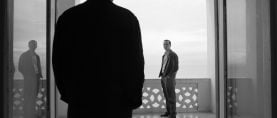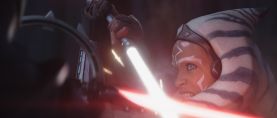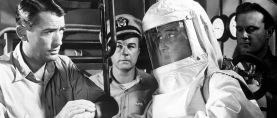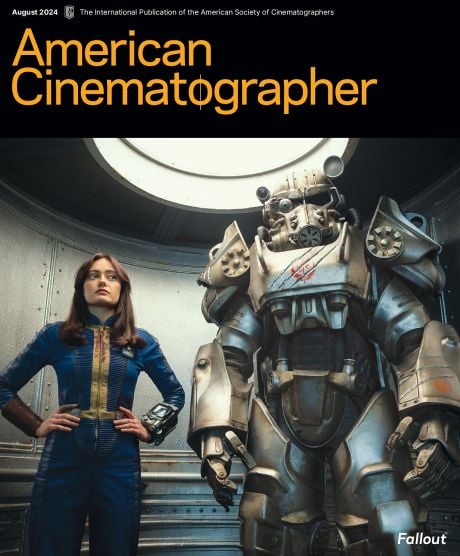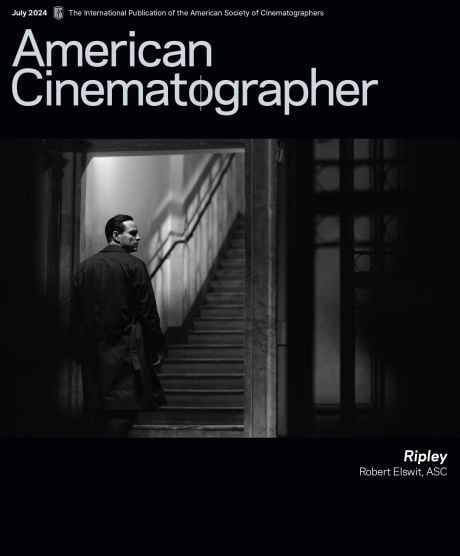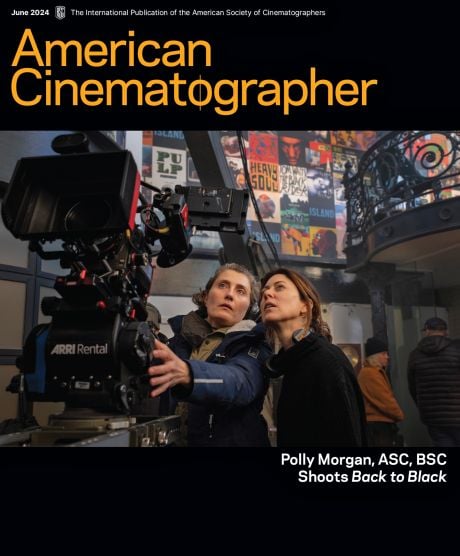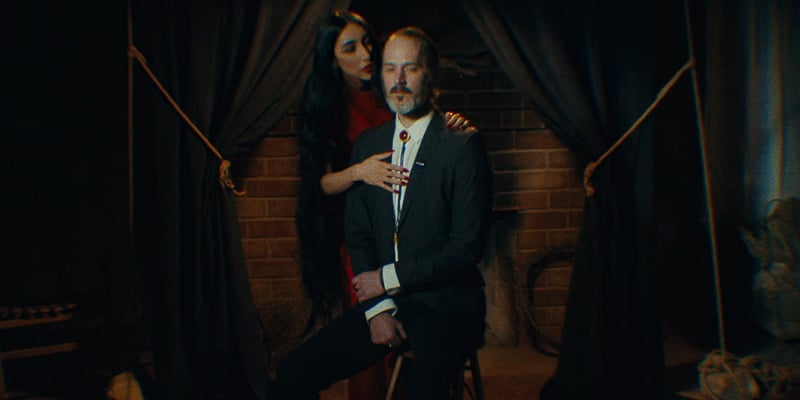
Customizing Lenses for Blood Nebraska’s “Fire” Music Video
Cinematographer Timur Civan puts years of optical experimentation to the test.

Blood Nebraska is the stage name of singer-songwriter Jesse Dvorak, whose music is described in his bio as a “dark, brutal, and romantic journey through the blackened oil fields of American landscapes, into forgotten desert towns, and dive bars where lovers meet and break each other’s heart in a single night.”
Cinematographer Timur Civan and frequent collaborator (and wife) Bhavani Lee happen to be great admirers of Dvorak’s, particularly his dirge-like ballad “Fire” from the 2020 album ROMANCE.
“After Bhavani and I saw him live, we contacted him and told him that we really feel something from this song,” says Civan, whose extensive CV includes a number of high-end fashion, tech, and automotive clients. “After a lot of pestering, I finally got him to have a coffee with me, and I was like, ‘We love your music and really want to do a video with you.’ I mean, how many times in your career do you get to make the music video for your favorite song? If ever, right?”
“It was a culmination of all the lens experiments I’d been doing for years, but couldn’t bring to a commercial project because they were a little too out there in terms of the strength of the look,” he tells AC. “This was the one case where it was actually appropriate.”
American Cinematographer: Elaborate on these lens experiments.
Timur Civan: Well, one of them was hand-made — just a magnifying glass in the rubber eyecup of an old SmallHD EVF. You hold the element with your fingers and push it up against the camera’s lens mount until the image is sharp-ish. Just having something that’s so imperfect really lent itself to the material. When we needed something that was a little bit more controlled, I would go to a 16mm-format Meteor zoom with one of the elements flipped around to make it smeary.
How did the imperfection of the look lend itself to the material? What kind of visuals did it bring to mind for you?
The song is a little bit ghost story, a little bit love story. It’s almost like a film score, with a slow build to this huge explosion of sound and energy at the end before coming back to earth. Bhavani’s been my collaborator and the subject of most of my lens tests, so she had a good idea of how we could translate that mood.
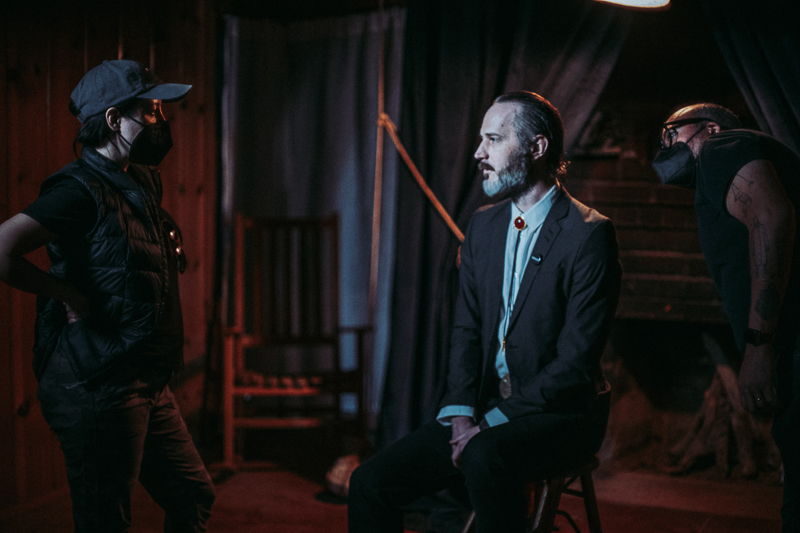
What were you trying to accomplish with your lens tests?
As a commercial DP, everything I do has to be clean, tidy, and bright. If it is moody, it’s moody within certain parameters. The product has to look good. This was a chance to explore the other end of the spectrum and see what surprises I can get out of a piece of glass, especially in the scenes with fire, where you start to see the bright areas dragging towards the corners of the frame. Matt Duclos calls it “coma.” So even the usually undesirable results worked in certain instances. We used every tool that was in our toolbox.
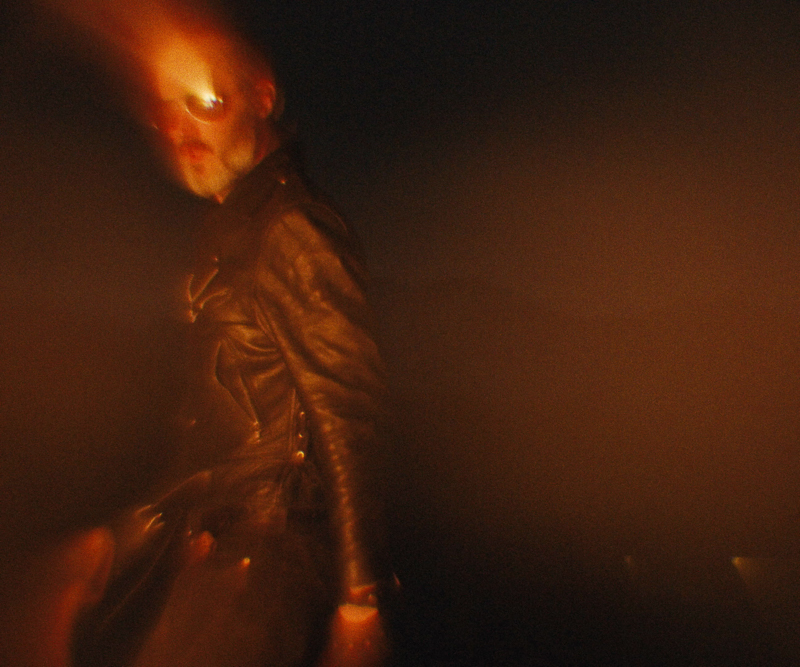
What else can you tell us about the prime lens?
I wouldn’t really call it a prime. It’s basically a magnifying glass lens, maybe equivalent to a 40mm. All you’re doing is pushing it in or pulling it out for focus. It covers full-frame, so we used it on the Red Helium and a Panasonic Lumix S1H mirrorless camera.
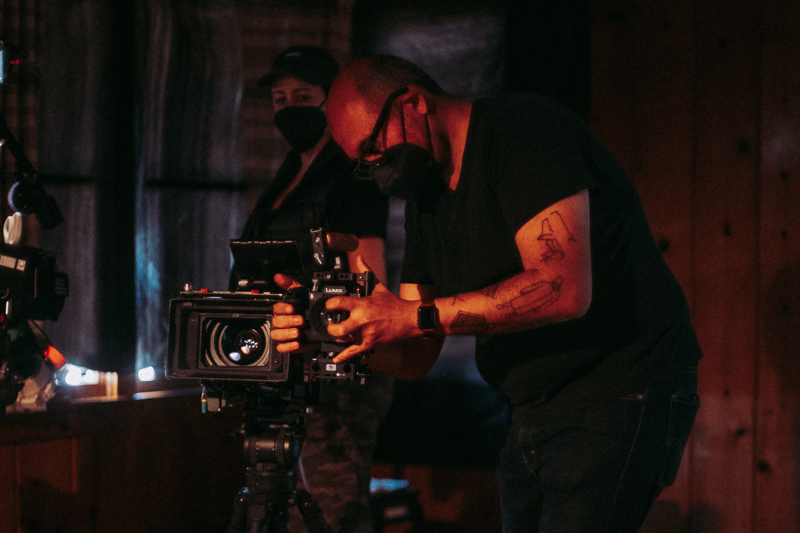
Would you get different results depending on the camera you used?
Well, the Helium is Super 35 and the Lumix is full-frame, but we shot the video in 16mm format, just a patch in the middle of the sensor. For me, it was important that the image felt like a 4 x 5 photograph, because the set is meant to look like an old portrait photography studio. Ultimately, we went for a 1.2:1 aspect ratio.
What other lens projects are you working on?
As far as fixed focal length glass, it’s just the one. It was Kismet that we found this magnifying lens that just happens to make a decent image. It has some contrast and resolves if you could hold it steady and flush to the camera body. I bought a box full of magnifying glasses, trying to replicate the effect for different focal lengths, but nothing really worked.
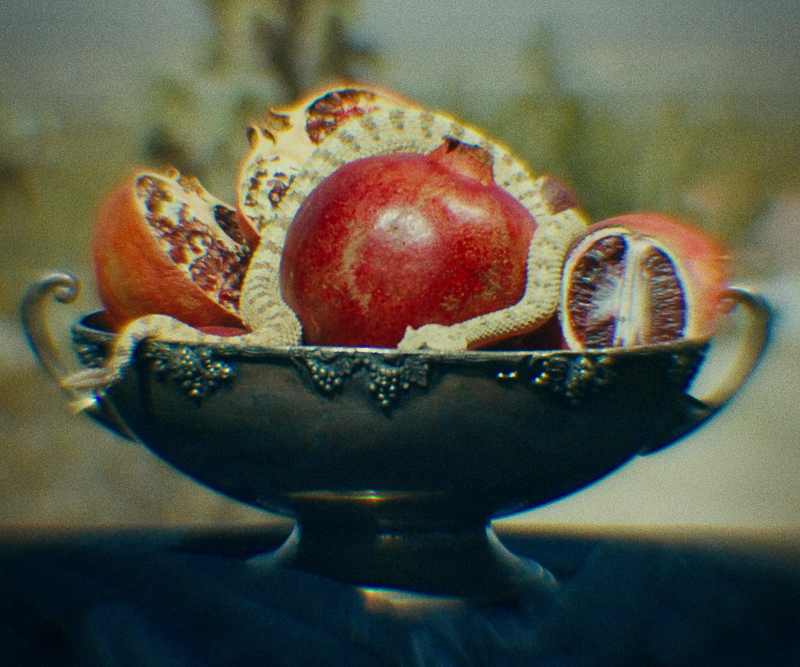
What are some of the shots where you use the magnifying lens? I’m looking at the pomegranates with the snake —
That one we made on the longer end of the Meteor zoom, to make it look a little bit mushy. A lot of the prime lens shots were used for close-ups of Nostalghia and Jesse, when their faces are close together.
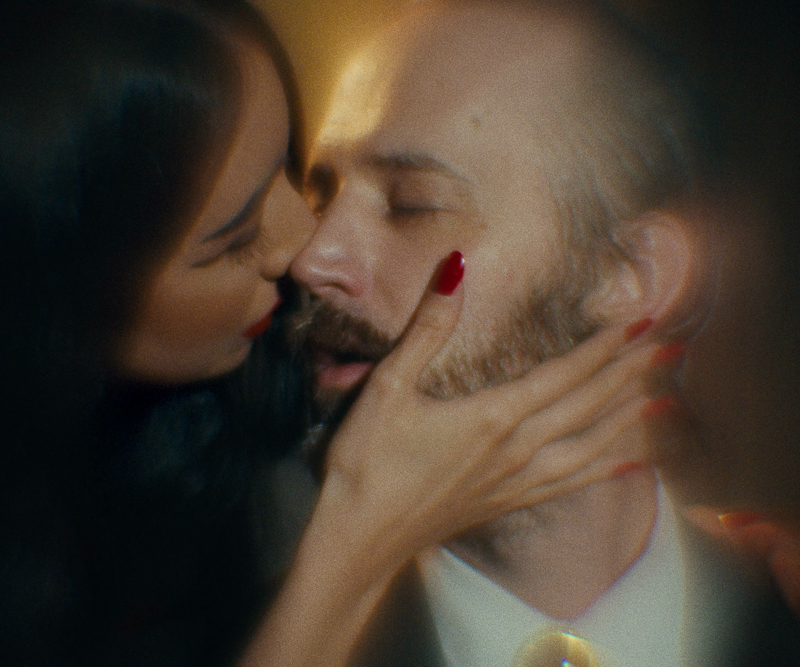
Was that where you mostly used this lens?
Yeah. It’s like states of dreaminess. In the cabin when he’s playing or singing, it was a little bit cleaner — we did that with the zoom — but when she’s in the frame, it was maximum dream state.
Let’s talk about the zoom lens now.
It’s a Meteor 5:1 17-69mm, originally made for a [Krasnagorsk-3] 16mm camera and was already modified for PL when I bought it. Even the wide end is pretty tight for the frame size, but that was the benefit of using the Helium sensor, that even though we’re looking at this little pinky nail-sized patch in the middle of it, I was still able to get a 2592 x 2160 image.

How did you modify it?
For this project, I flipped the front element by taking out the locking ring with a spanner wrench and added an old macro adapter to really push the look. I also used an old wide angle screw-on adapter; a lot of the magic happens when you zoom through it — chromatic aberrations, comas, flares and all sorts of funky stuff. It’s supposed to be an F1.9, but it’s probably closer to F2.5/F2.8. Of course, once you start throwing all the extra glass in front of it, you lose more.
How did you mitigate that light loss?
More light. The rough part was shooting the flames. Our special effects guy Tom Spera built this 12-foot roaring fire, and as is usually the case when you expose for the fire, everything else falls off. We did the whole sequence at twilight, when there was still enough illumination in the sky to bring up the surroundings. I tried to shoot the wides and the portrait stuff while there was still light and we could feel the background a little bit, and once it got dark, we started doing silhouettes against the flames.

You also shot in the moonlight, right?
Full moonlight. That was my favorite part. The S1H has a low base ISO of 640 and a high base ISO of 4000. Most modern cameras do pretty well when you double, maybe even triple the ISO, so if you’re starting with ISO 4000, you can safely go up to ISO 16,000. Then I thought, “Well, if that’s decent, and it’s a full-frame 6K sensor, what would happen if I pushed it even harder?” We ended up shooting at ISO 50,000 with a 50mm F0.95 Mitakon Zhongyi Speedmaster, and it looks incredible.

There are a few shots with this halo of crosses. Was that also in-camera?
Nicco Quinto, our set photographer/assistant production designer/associate producer had this cheap plastic suncatcher in his little bag of camera tricks, and I was messing around with it when the camera happened to be recording. I just wanted to see what it did, but it made it into the edit. So that was a little bit of an accident.
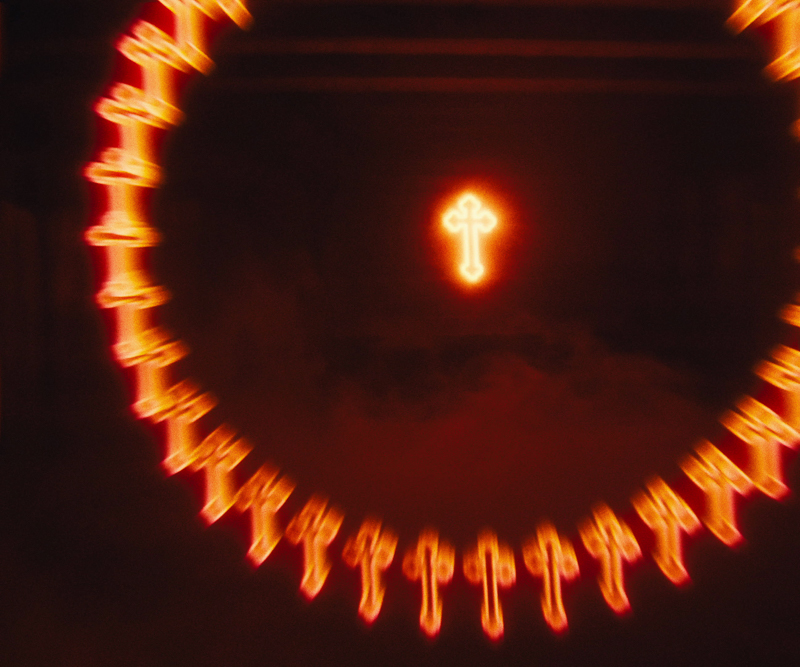
It sounds like a lot of the experimentation you’re doing with the lenses results in a lot of happy accidents, right? You're not collimating anything or being super-scientific.
It was really all about translating the song lyrics and Bhavani’s ideas. I didn’t want her to give me any image references, only what she wanted it to feel like. Then I went back into all the stuff I’d been working on over the years, to see what was possible. A lot of the time I was asking myself, “Is this going to work?” And most of the time, it did!

